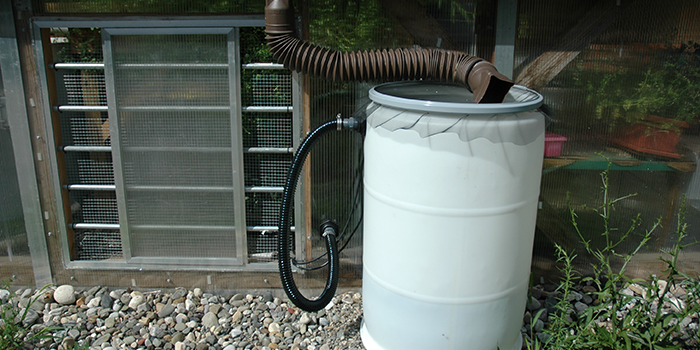
Rainwater Catchment
An inch of rainfall on a 1,000-square-foot house produces about 600 gallons of water. Rain gutters capture the water and direct it to one or more downspouts which connect to a cistern to help water the garden. Many other countries use rain water and rainwater cisterns as one of their main sources of water for both potable and non-potable uses such as irrigation, showering, toilets, and so on.
Cisterns come in a variety of shapes and sizes. Historically, cisterns were built as underground pits lined with stone, mortar, plaster or cement, and topped with a reinforced concrete roof at ground level. Today, there is choice between prefabricated cisterns from cement, fiberglass, or plastic, which are usually placed underground to hide from view and prevent freezing in colder climates, and above ground tanks made of steel or fiberglass. Some of the newest designs use corrugated steel bins lined with plastic (originally created to store grain). Storage capacity also varies from 500 to 10,000 gallons per cistern, although multiple cisterns are often interconnected in large building sites (Alliance for Water Efficiency).
Note: Rainwater may be contaminated by toxins and contaminants on the roof or in transit and should not be used for watering plants that you will consume (such as fruit or vegetable gardens) without a special filtering or treatment system to make the water potable.
To check if there are any incentives or rebates available for this product in your area, please visit the EPA Water Sense or SoCal WaterSmart.
Minimum Requirements
Must be permanently installed. Storage system to be sized to hold all water from a 1″ rainfall event (or 0.62 gallons per sq. ft. of total roof area used for capture).
